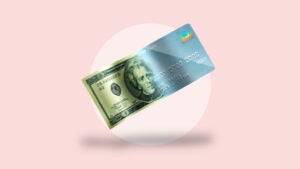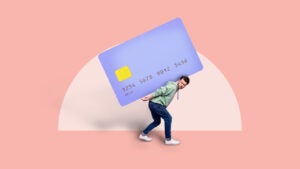Credit card balances hit a new all-time high

Americans’ credit card balances rose 2.4 percent in the second quarter of 2024 to a record-high $1.14 trillion, according to the New York Fed. That marks a staggering 48 percent increase since the first quarter of 2021.
As a recent Bankrate survey revealed, more people are carrying debt for longer periods of time. Credit card balances briefly fell in 2020 and early 2021 due to pandemic-related factors — for example, many Americans used government stimulus funds to pay down debt, and most people spent less because activities such as travel, dining out and live entertainment were greatly curtailed. But since early 2021, credit card balances have rocketed upward, fueled by a post-pandemic boom in services spending, as well as high inflation and high interest rates.
If you have credit card debt, paying it down should be toward the top of your household’s financial priority list. The average credit card rate is 20.73 percent, up from 16.34 percent just before the Fed started hiking rates in March 2022. If you have the average credit card balance ($6,218, according to TransUnion), and you only make minimum payments at 20.73 percent, you’ll be in debt for 18 years and will owe approximately $9,300 in interest.
What to do if you have credit card debt
If you have credit card debt, your primary objective should be to lower your interest rate. Forget about rewards for now — the two-thirds of credit card debtors who are chasing rewards are making a big mistake. It doesn’t make sense to pay 20, 25 or 30 percent in interest just to earn a few percentage points’ worth of cash back or travel rewards.
Don’t get me wrong, I love rewards, but only if you’re avoiding interest. Someone with credit card debt is much better off signing up for a credit card with a generous interest-free balance transfer promotion, some of which last up to 21 months.
The best way to take advantage is to refrain from adding new purchases, even if they’re interest-free for a while. Divide what you owe by the number of months in your 0 percent introductory term and try to stick with that level payment plan. That gives you the best odds of success. The interest rate will go way up once the promotion ends, so if at all possible, pay in full before the clock expires.
The balance transfer approach works best if you have a good to excellent credit score and no more than $5,000 or $6,000 in credit card debt. If you have a lower credit score or a higher debt load, consider working with a nonprofit credit counseling agency instead.
Reputable organizations such as Money Management International negotiate debt management plans and are often able to offer something like a 7 or 8 percent rate over four or five years. It’s not zero, but it’s a longer term, you don’t need great credit and their counselors provide a ton of helpful advice along the way.
I’m also a big fan of looking for ways to up your income and cut your expenses to turbocharge your debt payoff journey, such as taking on a side hustle, selling stuff you don’t need or canceling little-used subscriptions. You don’t need to do these things forever, but if you buckle down and make credit card debt payoff a priority, you can make major progress in as little as about six months in many cases.
The bottom line
With credit card balances at an all-time high and the average credit card rate hovering near record territory, it’s more important than ever to pay down this debt as soon as possible. The good news is that there are plenty of things you can do to reduce your share. Don’t feel ashamed — many people have credit card debt, and it’s often caused by very practical reasons such as emergency expenses and day-to-day costs outpacing your income.
The issue won’t go away on its own, so get that balance transfer card, pursue that side hustle or come up with another plan to pay down your credit card debt. You need to take matters into your own hands. Credit card balances and rates are likely to remain elevated for the foreseeable future.
Have a question about credit cards? E-mail me at ted.rossman@bankrate.com and I’d be happy to help.
Why we ask for feedback Your feedback helps us improve our content and services. It takes less than a minute to complete.
Your responses are anonymous and will only be used for improving our website.






